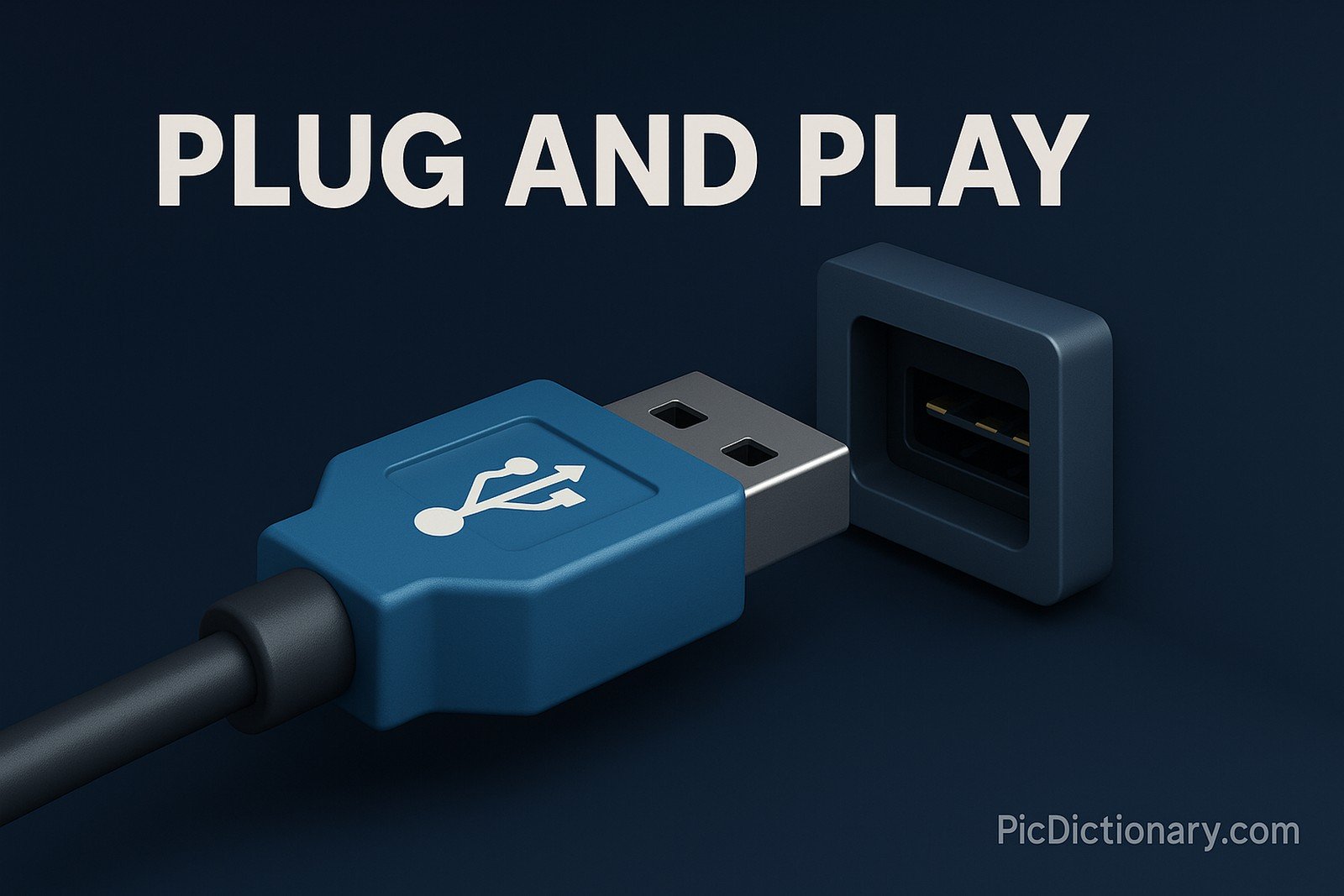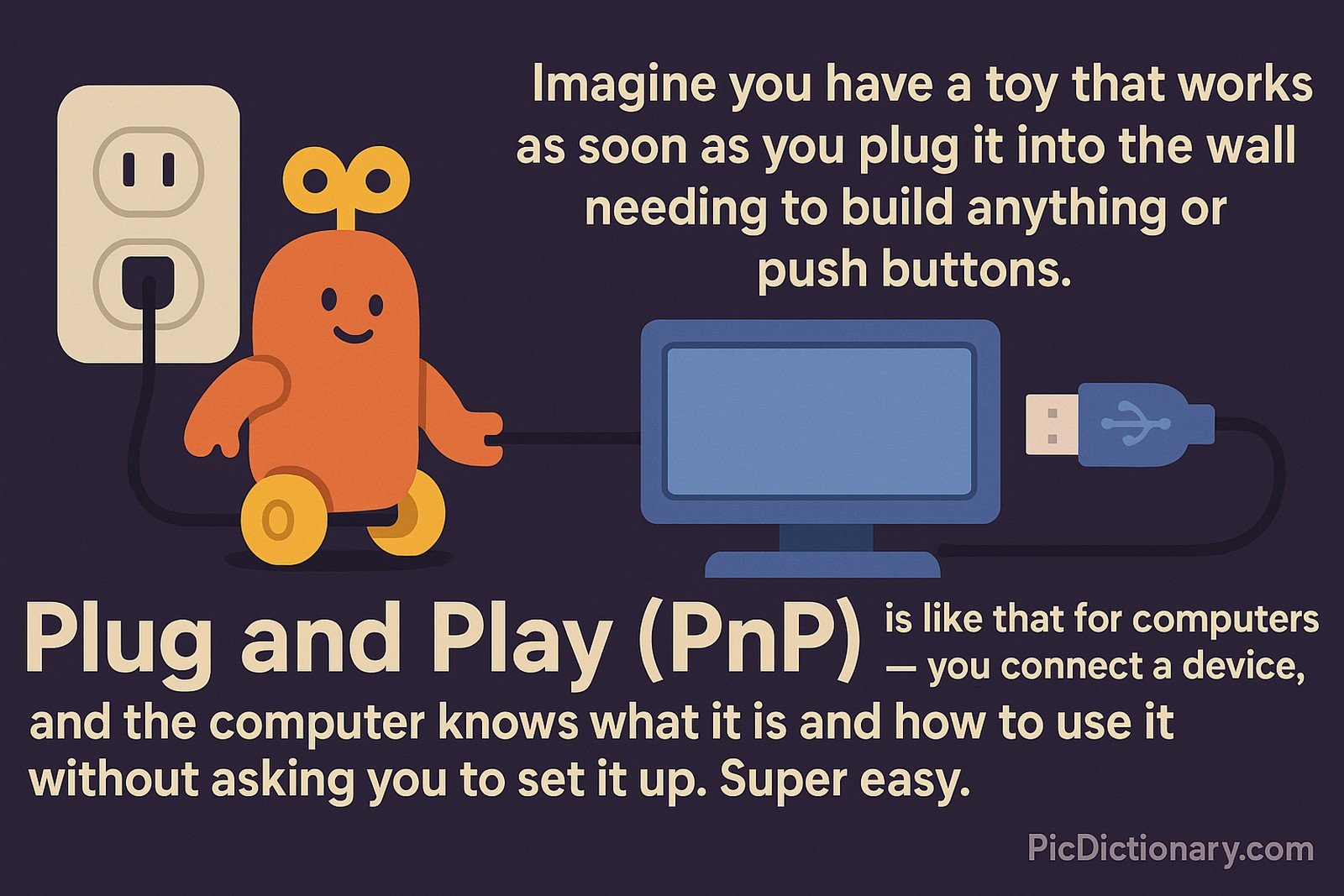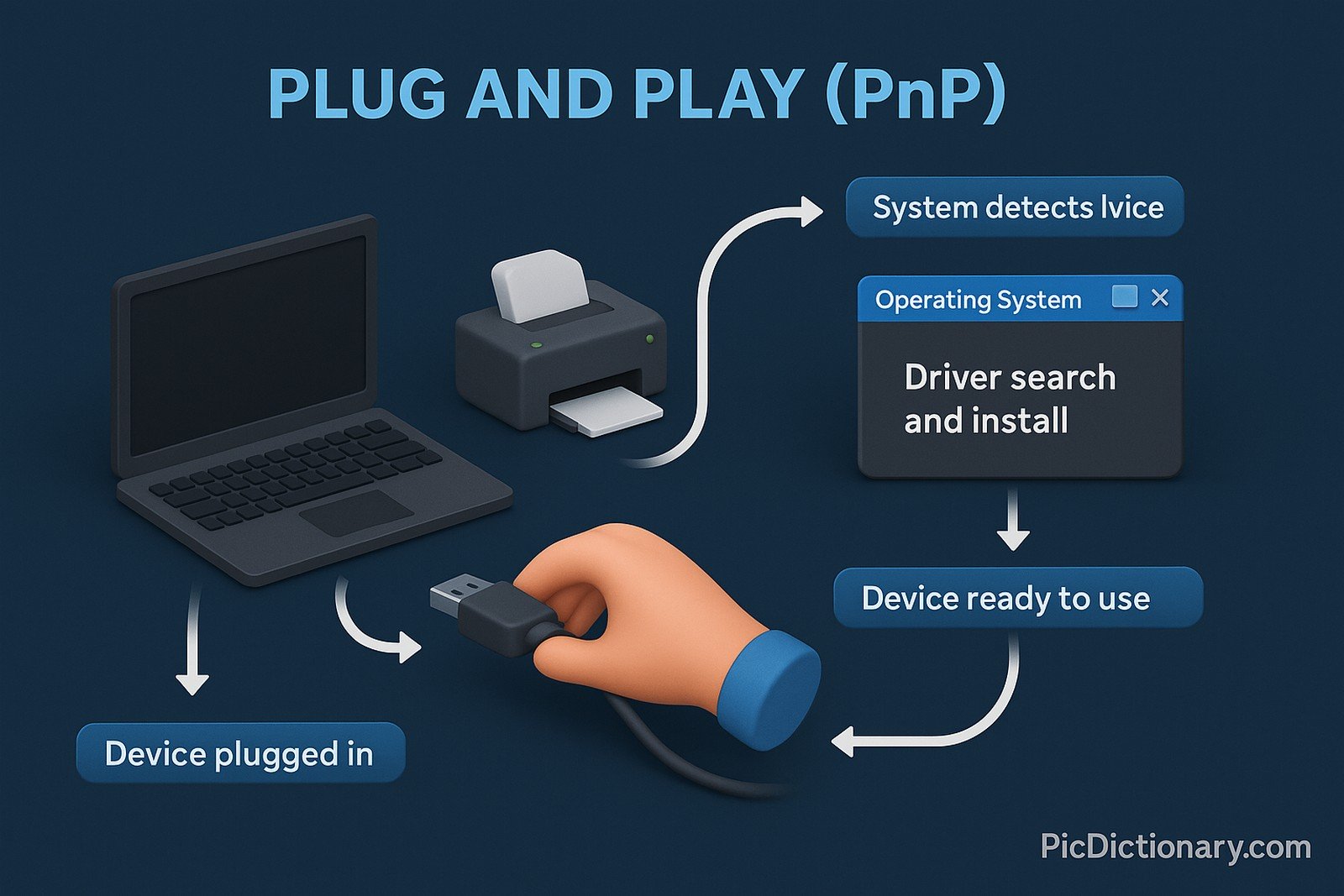Plug and Play (PnP)

Quick Navigation:
- Plug and Play (PnP) Definition
- Plug and Play (PnP) Explained Easy
- Plug and Play (PnP) Origin
- Plug and Play (PnP) Etymology
- Plug and Play (PnP) Usage Trends
- Plug and Play (PnP) Usage
- Plug and Play (PnP) Examples in Context
- Plug and Play (PnP) FAQ
- Plug and Play (PnP) Related Words
Plug and Play (PnP) Definition
Plug and Play (PnP) refers to a technology standard that allows a computer system to automatically detect, configure, and use hardware devices with minimal user intervention. When a PnP-compatible device is connected to a system, it is recognized instantly, and appropriate drivers are either installed or prompted for installation. This reduces the need for manual setup, allowing devices like printers, keyboards, and external drives to work almost immediately. It is a key part of operating systems like Windows, simplifying hardware integration and system expansion.
Plug and Play (PnP) Explained Easy
Imagine you have a toy that works as soon as you plug it into the wall without needing to build anything or push buttons. Plug and Play (PnP) is like that for computers — you connect a device, and the computer knows what it is and how to use it without asking you to set it up. Super easy!
Plug and Play (PnP) Origin
The concept originated in the early 1990s, primarily with the introduction of Windows 95. Microsoft, in collaboration with hardware manufacturers, pioneered this technology to make computer use more user-friendly and accessible, especially for non-technical users.
Plug and Play (PnP) Etymology
The phrase combines “plug” — as in connecting a device — and “play,” implying that once connected, the device is ready for use without extra configuration.
Plug and Play (PnP) Usage Trends
Initially popularized by consumer desktop computers, Plug and Play (PnP) is now a staple in all modern operating systems. The demand for devices that “just work” has grown with the rise of smartphones, smart home devices, and IoT, making PnP principles crucial across many technologies. Industries from healthcare to automotive rely on PnP frameworks for seamless device integrations.
Plug and Play (PnP) Usage
- Formal/Technical Tagging:
- Device Management
- Operating Systems
- Automatic Configuration - Typical Collocations:
- "PnP devices"
- "Plug and Play driver installation"
- "PnP hardware detection"
- "Plug and Play configuration"
Plug and Play (PnP) Examples in Context
- A USB mouse is instantly recognized by the computer without needing manual setup, thanks to Plug and Play (PnP).
- Modern game consoles use PnP to detect and configure new controllers immediately after connecting.
- Office printers are often Plug and Play (PnP) enabled, allowing employees to connect and print with minimal IT support.
Plug and Play (PnP) FAQ
- What is Plug and Play (PnP)?
It’s a technology that allows devices to work automatically when connected to a computer. - Does Plug and Play (PnP) work with all devices?
Most modern peripherals are designed with PnP support, but some older devices might need manual drivers. - Do I need to install drivers manually for PnP devices?
Usually not; the system detects and installs drivers automatically or guides you through it. - What operating systems support PnP?
All modern systems like Windows, macOS, and Linux distributions support PnP. - Can Plug and Play (PnP) work on smartphones?
Yes, especially with USB OTG devices and Bluetooth peripherals. - Why was PnP important in Windows 95?
It allowed users to add hardware without complicated manual configurations. - Is Plug and Play (PnP) secure?
Generally, yes, but users should ensure devices come from trusted sources to avoid security risks. - Can PnP devices conflict with each other?
Rarely, but if hardware or drivers are incompatible, conflicts may occur. - What happens if a PnP device isn’t recognized?
The system may prompt for manual drivers or display troubleshooting steps. - Are all USB devices Plug and Play (PnP)?
Most are, but older or specialized devices might need additional setup.

Plug and Play (PnP) Related Words
- Categories/Topics:
- Hardware Integration
- Device Detection
- Operating System Features
Did you know?
The first major commercial use of Plug and Play (PnP) was introduced by Microsoft in Windows 95, transforming how users interacted with hardware and making the setup process simpler and less intimidating for non-tech-savvy users.
PicDictionary.com is an online dictionary in pictures. If you have questions or suggestions, please reach out to us on WhatsApp or Twitter.Authors | Arjun Vishnu | @ArjunAndVishnu

I am Vishnu. I like AI, Linux, Single Board Computers, and Cloud Computing. I create the web & video content, and I also write for popular websites.
My younger brother, Arjun handles image & video editing. Together, we run a YouTube Channel that's focused on reviewing gadgets and explaining technology.



Comments powered by CComment